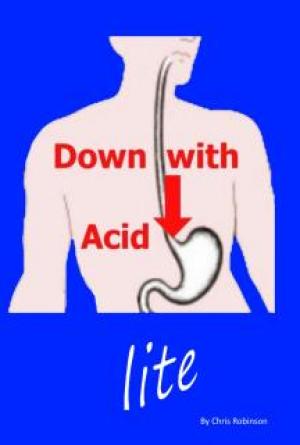
Vitamin K
Introduction
The “K”in Vitamin K stands for koagulation, the Danish spelling of the word for blood clotting, for it was discovered by a Danish scientist, Henrik Dam, in 1929.
Vitamin K is actually a group of yellowish crystalline (chemically pure) compounds belonging to a family of substances called quinones. There are at least three forms of Vitamin K. The naturally occurring vitamins are K1 (phylloquinone), which occurs in green plants and K2 (menaquinone), which is formed as the result of bacterial synthesis in the intestinal tract. The fat-soluble synthetic compound, menadione (K3) is about twice as potent biologically as the naturally occurring Vitamins K1 and K2 on a per microgram basis. Humans and animals convert menadione to menaquinone by adding a long side chain.
Absorption and Metabolism
As a fat-soluble vitamin, Vitamin K requires bile acid and pancreatic juice for its absorption. Therefore, fat in the gut must be present to stimulate Vitamin K absorption. Vitamin K is incorporated into chylomicrons in intestinal mucosal cells and is carried to the liver via chylomicrons.
Functions
- Blood clotting
In the liver Vitamin K functions as an essential cofactor for the carboxylase enzyme that converts specific glutamic acid residues of precursor proteins to a new amino acid, alpha-carboxyglutamic acid (Gla) in the completed proteins. These proteins include the Vitamin K-dependent blood clotting factors prothrombin (factor II) and factors VII, IX and X. Thus, a Vitamin K deficiency or the presence of an antagonist (i.e., coumarin or some snake venoms) will prolong blood-clotting time.
- Bone Health and Osteoporosis Prevention
Vitamin K – dependent carboxylase enzyme is also required to convert glutamic acid residues into alpha-carboxyglutamic acid (Gla) in the synthesis of osteocalcin found in bone and kidney.1
Vitamin K deficiency can lead to inadequate osteocalcin levels and impaired bone mineralization. Some studies have reported low Vitamin K levels in osteoporotic patients with fractures and/or lower bone mineral density.2,3,4
The presence of Vitamin K1 in green leafy vegetables may be one of the protective factors of a vegetarian diet against osteoporosis, which is a common finding in epidemiological studies.5
Vitamin K Recommended Daily Allowance
For adults the recommendation is 70-140 micrograms per day to ensure adequate status.

N.B. Since bacterial synthesis usually provides at least half the required amount of Vitamin K, there is usually little difficulty in acquiring the required dietary amount that is necessary.1
An average mixed diet provides 300 to 500 micrograms of Vitamin K daily.6 However, men and women aged 18-44 years often ingest less than the recommended level of Vitamin K.8,9
Vitamin K Deficiency
Hemorrhagic Disease of the Newborn
Little Vitamin K from the mother is transferred via the placenta to the developing fetus, and the normal intestinal bacteria that synthesize Vitamin K do not become established until about a week after birth. Hence, “hemorrhagic disease of the newborn” is not uncommon – a disease manifested by abnormal bleeding.
Therefore, it is necessary at times to administer Vitamin K intramuscularly to the baby upon delivery as a preventative measure against this disease (1mg of Vitamin K1 immediately after birth).1 This is a common practice.
Another approach used in Germany and sanctioned by the German Paediatric Society recommends giving oral Vitamin K at a dosage of 5mg twice weekly for the first 3 months of life.7
Supplementation Studies and Clinical Application
- Osteoporosis
It may be useful to supplement with 150-500 micrograms of Vitamin K to help prevent or treat osteoporosis in some instances (i.e., poor dietary intake of Vitamin K, fat malabsorption or if patient is taking drugs that deplete Vitamin K status).10
- Excessive Menstrual Bleeding and Bruising
In these cases Vitamin K status should be determined and supplementation with 150-500 micrograms of Vitamin K should be considered as part of the nutrition plan.10
It is known that doses of Vitamin K at 1 to 2 mg will correct a frank Vitamin K deficiency in most cases.1
N.B. Vitamin K supplementation is contraindicated if the patient is taking warfarin.12,13
Adverse Side Effects and Toxicity
Excessive doses of synthetic Vitamin K (mendione) can produce haemolytic anemia and jaundice in infants. Thus, mendione is no longer permitted in over-the-counter preparations. The water-soluble forms of Vitamin K have a greater safety margin and should be used when Vitamin K supplements are indicated.1
Drug-Nutrient Interactions
| 2. | A large number of drugs deplete or interfere with Vitamin K or hinder its activity, respectively. These include: |
| a. Anitbiotics - N.B. The exception is with the antibiotic drug ofloxacin, whereby Vitamin K depletion does not occur.11,14 |
| b. Anticonvulsants11,15,16 |
| c. Bile Acid Sequestrants |
| d. Corticosteroids |
| e. Oral Corticosteroids11 |
| f. Isoniazid11 |
| g. Mineral Oil11,18 |
3. Contra-indication
Since Vitamin K administration reverses the anticoagulant effects of Warfarin, people taking Warfarin should avoid Vitamin K – containing supplements, unless specifically directed by their prescribing doctor. Even the sudden ingestion of increased quantities of Vitamin K-containing vegetables (broccoli, brussels sprouts, kale, spinach, parsley, etc.) can antagonize the effects of Warfarin.12,13,19,20

2. Standard Textbooks of Nutritional Science:
- Shils M, Shike M, Olson J, Ross C. Modern Nutrition in Health and Disease. 9th ed. Baltimore, MD: Lippincott Williams & Wilkins; 1993.
- Escott-Stump S, Mahan LK, editors. Food, Nutrition and Diet Therapy. 10th ed. Philadelphia, PA: W.B. Saunders Company; 2000.
- Bowman B, Russell RM, editors. Present Knowledge in Nutrition, 8th ed. Washington, DC:.ILSI Press; 2001.
- Kreutler PA, Czajka-Narins DM, editors. Nutrition in Perspective. 2nd ed. Upper Saddle River, NJ: Prentice Hall Inc.; 1987.
3. Vermeer C, et al. Effects of Vitamin K on bone mass and bone metabolism. J Nutr 1996;126:1187-91.
4. Bitensky L,et al. Circulating Vitamin K levels in patients with fractures. J Bone Joint Surg 1988;70(B):663-4.
5. Kanai T, et al. Serum Vitamin K level and bone mineral density in post-menopausal women. Int J Gynecol Obstet 1997;56:25-30.
6. Price PA. Role of Vitamin K-dependent proteins in bone metabolism. Ann Rev Nutr 1998;8:565-83.
7. Modern Nutrition in Health and Disease. Olson RE, Goodhart RS, Shils ME, editors. 6th ed. Philadelphia, PA: Lea & Febiger, 1980.
8. Gubner R, et al. Vitamin K therapy in menorrhagia. South Med J 1944;37:556-8.
9. Booth SL, et al. Dietary intake and adequacy of Vitamin K. J Nutr 2000; 130Suppl 15):785S-8S.
10. Booth SL, et al. Assessment of phylloquinone and dihydrophylloquinone dietary intakes among a nationally representative sample of U.S. consumers using 14-day food diaries. J Am Diet Assoc 1999;99:1072-6.
11. In: Encyclopedia of Nutritional Supplements. Murray M, editor. Rocklin, CA: Prima Publishing; 1996. p. 54-8.
12. Healthnotes, 2000 Inc. Available from: URL: http://www.healthnotes.com.
13. Taylor CJ, et al. Vitamin K to reverse excessive anticoagulation: a review of the literature. Pharmacot therapy 1999;19:1415-25.
14. Harris JE. Interaction of dietary factors with oral anticoagulants: review and applications. J Am Diet Assoc 1995;95:580-4.
15. Cummings JH, et al. Role of intestinal bacteria in nutrient metabolism. J Parenter Enteral Nutri 1997;21 (6):357-65.
16. Keith DA, et al. Vitamin K-dependant proteins and anticonvulsant medication. Clin Pharmacol Ther 1983;34(4):529-32.
17. Keith DA, Gallop PM. Phenytoin, hemorrhage, skeletal defects and Vitamin K in the newborn. Med Hypotheses 1979;5(12):1347-51.
18. Knodel LC, et al. Adverse effects of hypolipidaemic drugs. Med Toxicol 1987; 2(1):10-32.
19. In: The Merck Manual of Diagnosis and Therapy. 16th ed. Berkow R, Fletcher AJ, Beers MH, et al, editors. Rahway, NJ: Merck Research Laboratories; 1992. p. 810.
20. Coumadin (warfarin), Product prescribing information. DuPont Pharma. Wilmington, Delaware: 2001.
21. Bell RG. Metabolism of Vitamin K and prothrombin synthesis: anticoagulants and the Vitamin K-expoxide cycle. Fed Proc 1978;37(12):2599-604.










